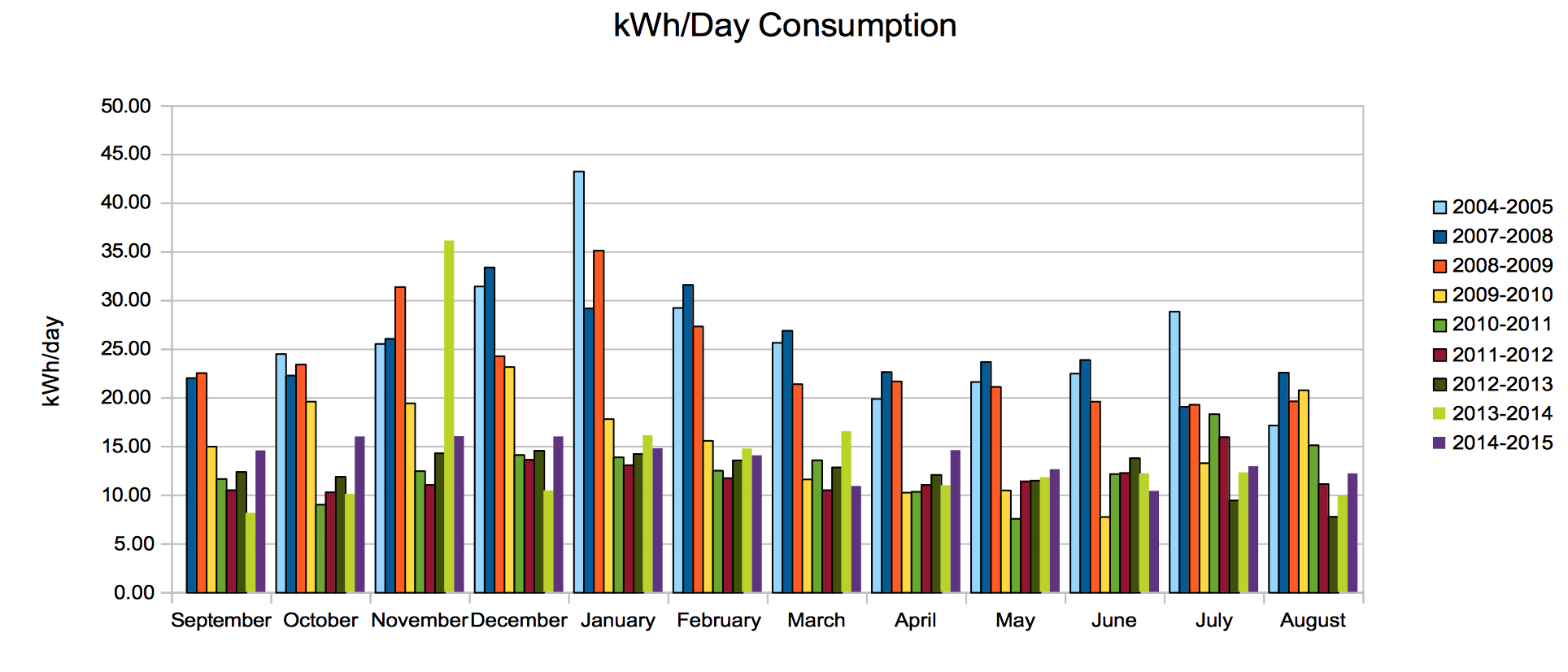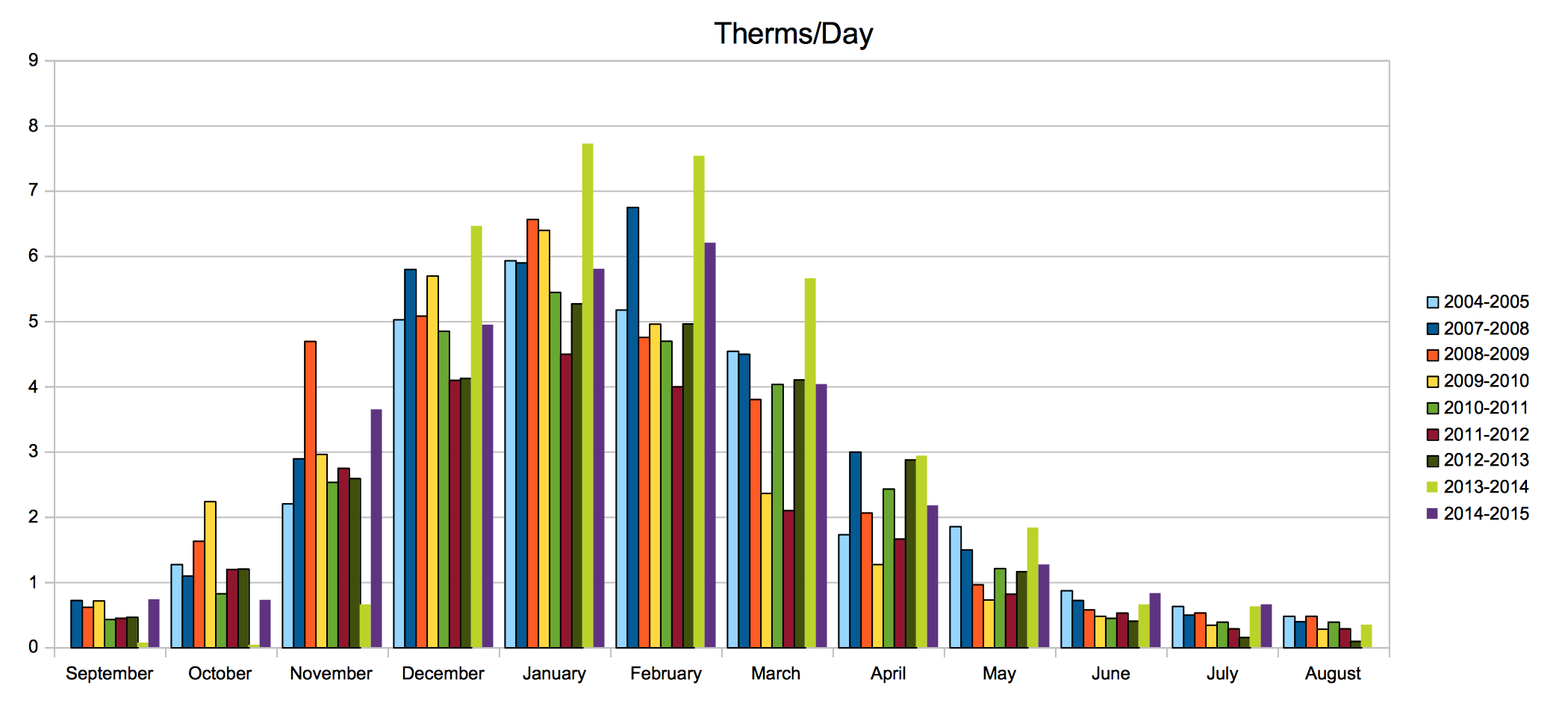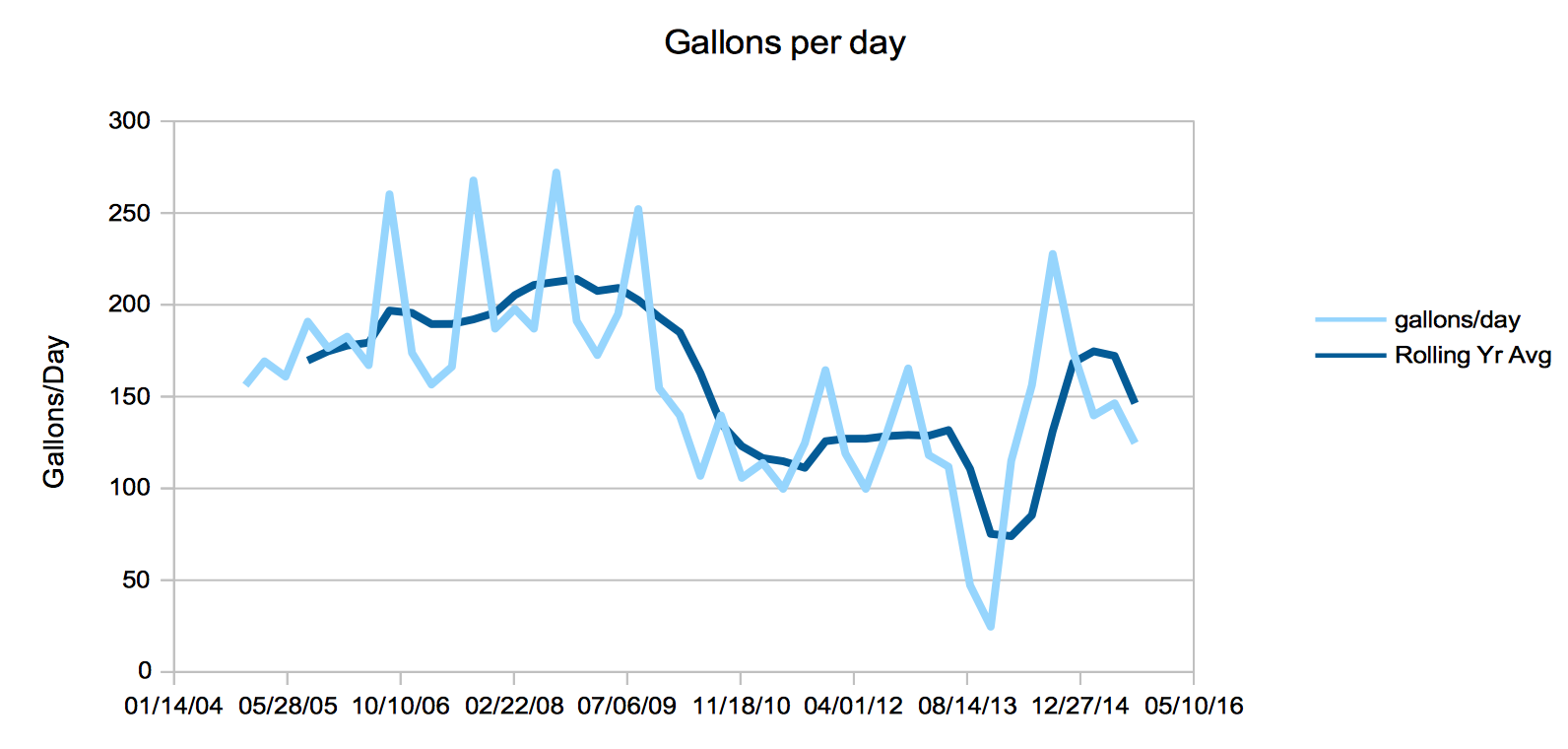


Above result from the ENERGY STAR Home Energy Yardstick



Above result from the ENERGY STAR Home Energy Yardstick
We've done a lot of improvements to our 1920's era house to make it more energy efficient, and less expensive on a day to day basis. We've made good progress on electricity use, and natural gas usage is getting slightly better. Hopefully it will continue to get better with the insulation we've done; see below for everything we've upgraded. (Many improvements were done well prior to 2008; unfortunately I don't have any data for our early energy bills from 2001 when we moved in).
The boiler in the house when we bought it was a downright scary, ancient thing. We replaced it for the first winter, and although it was more efficient than the previous unit, it wasn't particularly great by today's standards. I had considered a high-efficiency boiler, but the heating contractor talked me out of it.
After our renovation in 2014, the house was tight enough that the atmospherically vented appliances no longer drafted properly, so we replaced them with a sealed-combustion high efficiency boiler for both heat and domestic hot water. Energy and data geeks may be interested in the monitoring setup I have for this.
To start with, early on we replaced the windows. Normally this is not a particularly good place to start, but what we had was in really awful shape, and the wind just whistled through. But, truth be told, we did this out of necessity, not from an energy perspective, though it probably helped a little.
We originally replaced most fixtures with CFLs, but LEDs have fallen in price and increased in quality dramatically in recent years. Every fixture in the house now has an LED bulb.
We had the attic insulated and sealed long ago, and in 2010 we did the exterior walls, and put more up in the attic. It was a bit of a mess to get done, but not too bad overall, and it certainly feels more comfortable now.
I also insulated the hot water pipes as far as I could, and it's really surprising how much difference that makes at the tap. This allows us to turn the hot water heater down a bit.

I put 1.5gpm or 1.0gpm aerators on the faucets that could take them, and a 1.6gpm low-flow shower head on the basement shower; it saves water and natural gas, and really, you can hardly tell the difference.
A High-Efficiency clotheswasher arrived in 12/09.
We also got these HydroRight dual flush adapters for the toilets at Home Depot - they don't cost too much (a bit under $20) and they have made an astounding difference in our water usage.
There was a spike in usage when we re-sodded the back yard and needed to water it daily...
I'm a geek, and we have several computers in the house. I realized that they were possibly our single largest electric draw, so tried to mitigate that.
The machine hosting this website is extremely efficient, drawing only 18W. It handles web and email services as well as home media hosting. You can read about how I built it in this blog post.
It's hard to improve what you don't measure, so I started with a Kill-a-Watt meter to see how much power various things used. A while ago, I also built a homebrew whole-house power meter that measures based on an infrared pulse that the meter emits every watt-hour. That has since been replaced with a current transformer solution to monitor both mains and solar feed:


We have only one fridge - nothing stashed in the basement or garage. It's energy star, of course, but fairly large. It accounts for 10% of our annual electricity usage on its own; because it is an appliance that always runs, refrigerator efficiency really matters!
The best appliance we have for energy saving is the clothesline. I hang out the clothes whenever I can; after monitoring the energy that the dryer uses, it's fairly shocking, and the sheets smell nicer this way. :)
Even little things help - when we put a bathroom fan in, I found the Panasonic "WhisperGreen" fans; the one we chose takes only 5-10W (depending on the static pressure in the exhaust duct) - compare this to the 20W+ for the old fan in the basement. And on top of that, hooked it to a motion-sensing wall switch which automatically turns it off (never on) after 30m of someone leaving the room, so that it doesn't exhaust all the home's conditioned air if forgotten.
When we put a new roof on, we chose an Energy Star rated cool roof shingle; these reflect the sun's energy to keep the home cooler in the summer, as well as help reduce the heat island effect in the city, among other things.
And finally, we have a 2.76kW solar PV array on the roof.


We also subscribe to Xcel Energy's Windsource program, so that we help put renewable energy on the grid to match what we take off it. It costs a very small fraction of our total electricity bill to do this.
Recycling, composting, rainbarrels, yadda yadda yadda.